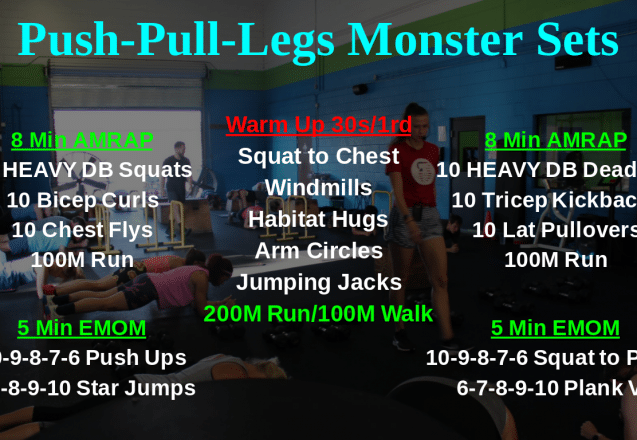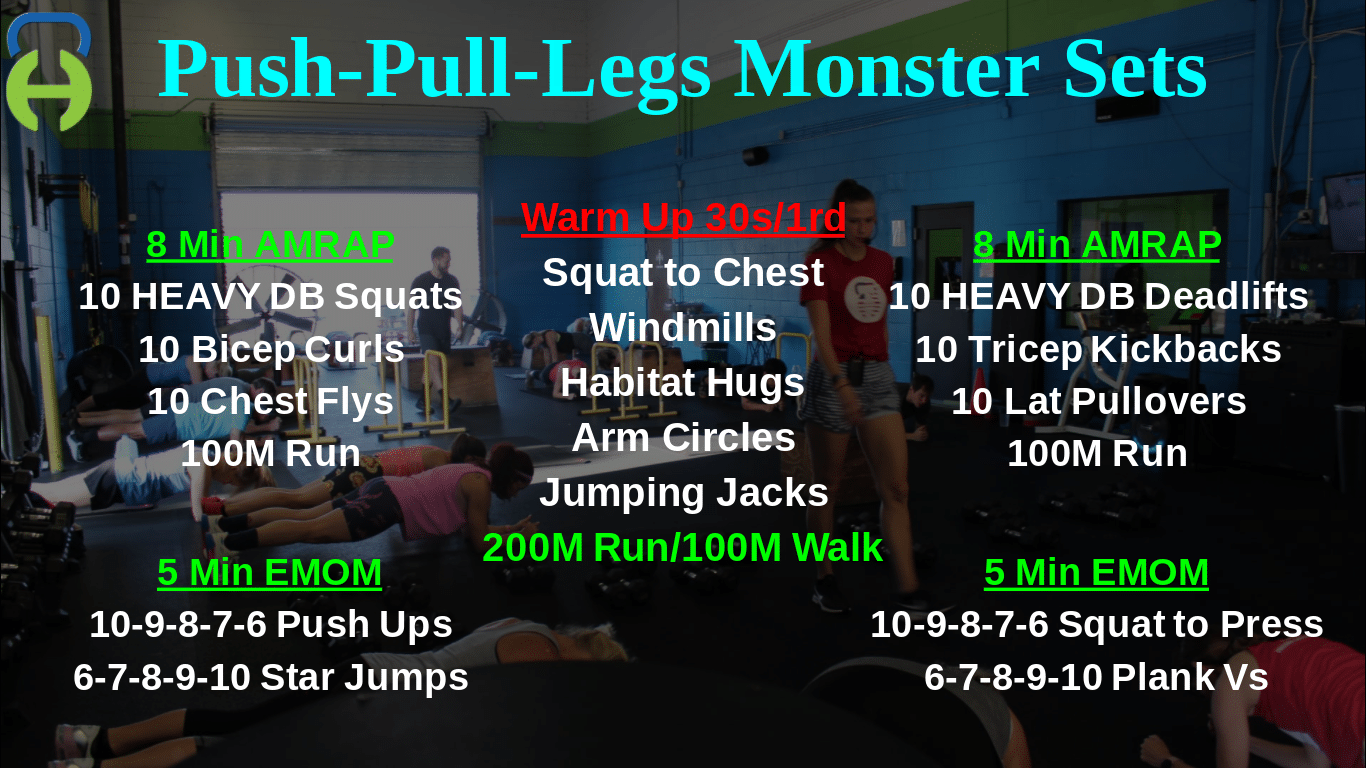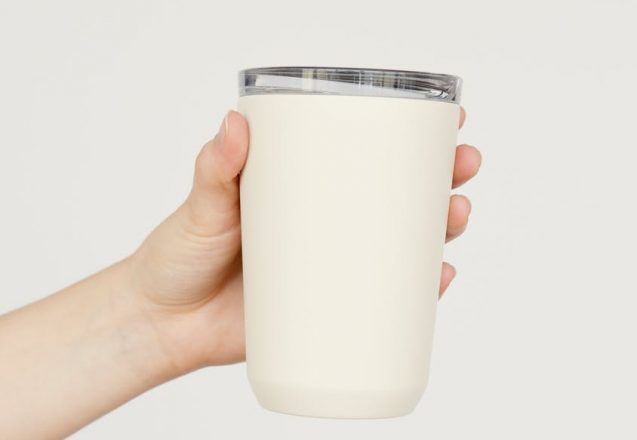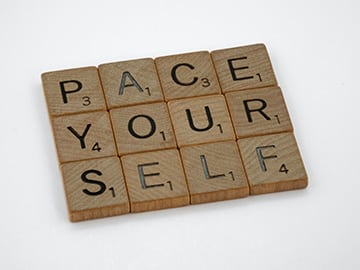Can I Exercise With Bad Feet Or Ankles?
 There are some very good reasons to get a personalized program and one of those is ensuring special needs are met. For instance, can you still exercise with bad feet or ankles? The answer is yes, but you need a program designed specifically for your needs. At Habitat Health and Fitness in Lakeland, Florida, FL, our personal trainers ask about those special needs, learn about your goals and assess your fitness before creating a program for you. So what type of exercises are safe to do if you have problems. It depends on the exact problem, but here are some generalized ideas.
There are some very good reasons to get a personalized program and one of those is ensuring special needs are met. For instance, can you still exercise with bad feet or ankles? The answer is yes, but you need a program designed specifically for your needs. At Habitat Health and Fitness in Lakeland, Florida, FL, our personal trainers ask about those special needs, learn about your goals and assess your fitness before creating a program for you. So what type of exercises are safe to do if you have problems. It depends on the exact problem, but here are some generalized ideas.
Let’s start with what you shouldn’t do.
Any type of high impact workout is a no-no, whether you have a temporary problem, such as a broken ankle, or something more permanent. You may be able to do some alternate exercises, such as aqua jogging, swimming or seated and water exercises, but only if you have a cast that’s waterproof or no cast at all. Some exercises, like battle ropes, can be done from a seated position. Always ask your health care professional before you begin any program of exercise.
Modifying exercises to prevent pressure is a good place to start.
Strengthen your core muscles by laying on your back and putting your knees together, bringing them up and bending them more as you do. Pull your bent knees as close to your chest as possible, then slowly lower them. While they’re super tough, doing leg lifts from a seated position with legs outstretched can be done. Ask your trainer for help with form. Switch out butt kicks used for a toned bottom with donkey kicks that are done on the hands and knees.
Upper body workouts can be done from a seated position.
Do stretches to warm up your upper body before you start. You can even do air boxing or make angel wings. There are a host of upper body strength training workouts that you can do safely with resistance bands. Depending on your problem, doing foot stretches can help build up the muscles. In a seated position, lift one foot and make circles with your foot if you’re able. Some stretches involve using resistance bands, too.
- Don’t push yourself beyond the pain. Only do exercises that don’t put undo pressure on the area. Those could cause even more damage to the foot or ankle.
- Modify traditional exercises, like doing push-ups on bent knee or doing them by placing your thighs on a chair, coffee table or ottoman. Keeping your hands shoulder width apart, raise your upper body until your arms are straight.
- On your hands and knees, do foot circles. Squeeze your bottom tightly as you lift one leg, move it first in 3-4 clockwise circles, then counter-clockwise ones. Lower it and do the other side.
- Just because you have foot or ankle problems, it doesn’t mean you can’t exercise. It means you have to be careful not to cause more damage. That’s where having a trainer can be extremely beneficial.
For more information, contact us today at Habitat Health & Fitness





 If you haven’t already set a fitness goal. It’s time to start. Setting a goal is like having a destination on a road trip. If you don’t know where you’re going, you won’t know when you get there and you definitely won’t know the quickest way to go. A fitness goal can be anything that’s important to you. If you want to look better, it can be toning your body or losing weight. If your health is top priority, it may include building your strength, flexibility and endurance.
If you haven’t already set a fitness goal. It’s time to start. Setting a goal is like having a destination on a road trip. If you don’t know where you’re going, you won’t know when you get there and you definitely won’t know the quickest way to go. A fitness goal can be anything that’s important to you. If you want to look better, it can be toning your body or losing weight. If your health is top priority, it may include building your strength, flexibility and endurance.
 My clients at Habitat Health and Fitness in Lakeland, Florida, aren’t the only people that want to get rid of belly fat. It’s almost universal. It takes the right type of workout, but also one more thing, a healthy diet. No matter how many workouts you do that target the belly, if there’s a layer of fat covering it, nobody will know. You have to lose weight all over your body to see the results.
My clients at Habitat Health and Fitness in Lakeland, Florida, aren’t the only people that want to get rid of belly fat. It’s almost universal. It takes the right type of workout, but also one more thing, a healthy diet. No matter how many workouts you do that target the belly, if there’s a layer of fat covering it, nobody will know. You have to lose weight all over your body to see the results.
 We focus a lot on eating a healthy pre and post workout snack that contains protein and carbs. One of those options is yogurt and fruit and another is cheese and crackers. Many of the protein options come from dairy products, but is dairy in your diet really a healthy option or not. If you’re lactose intolerant, milk products probably aren’t the best thing to eat, even though most report that small amounts of cheese, cottage cheese or yogurt doesn’t affect them. What about the rest of the people who aren’t allergic or intolerant of dairy?
We focus a lot on eating a healthy pre and post workout snack that contains protein and carbs. One of those options is yogurt and fruit and another is cheese and crackers. Many of the protein options come from dairy products, but is dairy in your diet really a healthy option or not. If you’re lactose intolerant, milk products probably aren’t the best thing to eat, even though most report that small amounts of cheese, cottage cheese or yogurt doesn’t affect them. What about the rest of the people who aren’t allergic or intolerant of dairy?
 You probably have heard a lot about eating raw veggies and how healthy they are. While it’s true some raw vegetables provide more nutrients than cooked ones do for some nutrients, cooking enhances other nutrient content. Cooking may destroy natural enzymes, but it’s also easier to digest. Some vegetables simply don’t taste good raw, either. It all depends on the vegetable and how you cook it.
You probably have heard a lot about eating raw veggies and how healthy they are. While it’s true some raw vegetables provide more nutrients than cooked ones do for some nutrients, cooking enhances other nutrient content. Cooking may destroy natural enzymes, but it’s also easier to digest. Some vegetables simply don’t taste good raw, either. It all depends on the vegetable and how you cook it.
 At Habitat Health and Fitness in Lakeland, Florida, FL, I get a lot of clients at that ask, “Should I push myself or pace myself?” There’s no answer that fits all situations. If you’re just starting a fitness program, pushing yourself too hard can actually cause a set-back. On the other hand, not pushing yourself won’t always give you the results you want. Whether to push or pace depends on you, your knowledge and your goals.
At Habitat Health and Fitness in Lakeland, Florida, FL, I get a lot of clients at that ask, “Should I push myself or pace myself?” There’s no answer that fits all situations. If you’re just starting a fitness program, pushing yourself too hard can actually cause a set-back. On the other hand, not pushing yourself won’t always give you the results you want. Whether to push or pace depends on you, your knowledge and your goals. If it were just a matter of cutting out the added sugar in coffee or opting out of that candy bar after work, cutting down on added sugar wouldn’t be a problem. However, today sugar is in everything. In fact, each year the average American consumes approximately 152 pounds of sugar in a year. That’s three pounds or six cups a week. Great-great-great grandma and grandpa at only about two pounds of sugar 200 years ago. Can you avoid sugar entirely? Are there healthier alternatives to white sugar that you can use to avoid the health issues too much sugar causes?
If it were just a matter of cutting out the added sugar in coffee or opting out of that candy bar after work, cutting down on added sugar wouldn’t be a problem. However, today sugar is in everything. In fact, each year the average American consumes approximately 152 pounds of sugar in a year. That’s three pounds or six cups a week. Great-great-great grandma and grandpa at only about two pounds of sugar 200 years ago. Can you avoid sugar entirely? Are there healthier alternatives to white sugar that you can use to avoid the health issues too much sugar causes? New clients at Habitat Health and Fitness in Lakeland, FL, ask me about sugar substitutes and artificial sweeteners. It’s normally in response to the initial cravings of giving up sugar. Choosing to opt for an artificial sweetener may mean you’re loading up your body with chemicals and that can be as bad or worse as using regular cane or beet sugar. In my estimation, giving up food with added sugar is one of the biggest obstacles in living healthier. Once you change your eating habits, you won’t find adding sugar necessary and be able to taste the sweetness of fresh fruit and vegetables.
New clients at Habitat Health and Fitness in Lakeland, FL, ask me about sugar substitutes and artificial sweeteners. It’s normally in response to the initial cravings of giving up sugar. Choosing to opt for an artificial sweetener may mean you’re loading up your body with chemicals and that can be as bad or worse as using regular cane or beet sugar. In my estimation, giving up food with added sugar is one of the biggest obstacles in living healthier. Once you change your eating habits, you won’t find adding sugar necessary and be able to taste the sweetness of fresh fruit and vegetables.